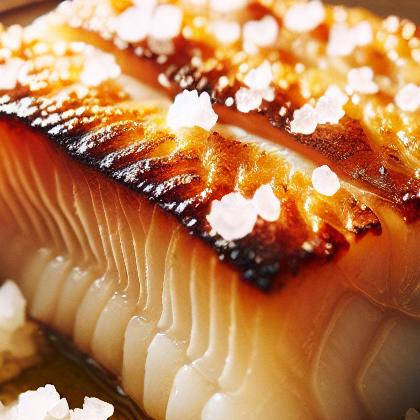Showing results for 'Salt cod'
close
Salt Cod

Dried and salted cod, sometimes referred to simply as salt cod, is cod which has been preserved by drying after salting. Cod which has been dried without the addition of salt is stockfish. Salt cod was long a major export of the North Atlantic region, and has become an ingredient of many cuisines around the Atlantic and in the Mediterranean. With the sharp decline in the world stocks of cod, other salted and dried white fish are sometimes marketed as "salt cod", and the term has become to some extent a generic name.
Salt cod Pairs With:
Food Item
Flavor Affinity Level
Salt cod Properties:
| Food Property | Type | Description |
|---|---|---|
| Flavor Profile | Salty | Salt cod has a pronounced salty flavor due to the curing process. |
| Texture | Firmness | Salt cod has a firm texture after being salt-cured, which requires soaking before cooking to rehydrate. |
| Nutritional Value | Macronutrients | Salt cod is a good source of protein and is low in fat. |
| Micronutrients | Salt cod is rich in vitamins and minerals such as Vitamin B12 and selenium. | |
| Fiber | Salt cod does not contain fiber. | |
| Texture | Moisture | Salt cod is initially dry due to the curing process but becomes moistened after soaking in water. |
| Cooking Behavior | Water Retention | Salt cod absorbs water when soaked before cooking. |
| Aroma | Fermentation | Salt cod may have a slightly fermented aroma due to the curing process. |
| Chemical Composition | Acidity/Alkalinity (pH) | Salt cod is alkaline due to the salt curing process. |
Food Pairing App - Version 1.2.0
